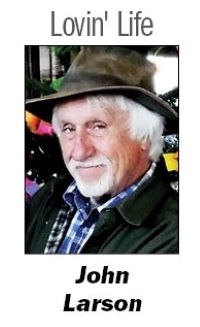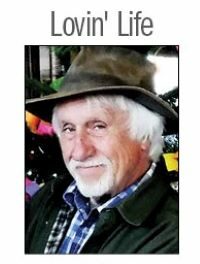
With yesterday being Pearl Harbor Remembrance Day, I try to imagine how greatly diminished the Christmas festivities in America may have been back in 1941.
I’ve met a handful of veterans who were stationed in Hawaii and lived through that day, as well as some members of the 515th Brigade of the 200th Coast Artillery Regiment, which was attacked the day after Pearl Harbor on the other side of the Pacific.
It’s been almost 15 years now since I sat down with Pete Pearce in Luis Lopez – 95 at the time – for his recollections of serving with the 515th in the Philippines, his ordeal as one of the “Battling Bastards of Bataan.” He was 28 years old when he was called up to serve in the U.S. Army in 1941, and by the time the war ended, he had spent three-and-a-half years as a prisoner of war.
Pete passed away in 2013, and I still feel privileged to have heard his story. Before the war, he was working as an engineer and ran cattle out of Springerville.
Upon entering the Army, he was assigned to the 200th Coast Artillery, known as the New Mexico Brigade. That unit split into two, and the 515th was formed. They were sent to the Philippines in August 1941 and had little time to train on the artillery. So when enemy bombers, along with strafing fighters, hit the island just past noon on Dec. 8, the New Mexico Brigade was not fully equipped for a sustained battle. But, Pete said, “Our orders from MacArthur was to keep the enemy from having ‘free use of the whole island.’”
“We were anti-aircraft so we had to get our guns on them,” Pete remembered. “Then we were later moved up to the Bataan Peninsula, on the west side of Luzon.”
He said they were ordered to fight and hold their position until they were relieved. “They were going to make us stay out on duty until the last man. We were doing that very thing.”
Within three to four months, the 12,000 Americans and some 66,000 Filipino troops had run out of food, and eventually ammunition.
“We were starving to death, and I got down to where I weighed about 80 pounds,” Pete remembered. “We ran out of rations and were having to eat anything we could get our hands on. We ate every dog we could catch … every lizard. We ate the 250 horses of the 26th Cavalry, and all 47 of their mules.”
He said he was generally put on detail to forage for food, and “found that monkeys were easy to catch. We killed and ate the monkeys. We were under attack the whole time.”
“After April 9, we ran out of ammunition,” he said. “General [Edward] King told us to meet down on the end of the peninsula. We thought we would have to cross over to Corregidor on the ninth, but instead, he surrendered us.”
This was contrary to MacArthur’s direct order to not surrender.
“We had no ammunition left,” Pete said.
After the army was surrendered, “we were taken prisoners and forced to walk the 85 miles from Mariveles Mountain to San Fernando,” now known as the Bataan Death March.
The troops were forced to walk for days through the scorching heat of the Philippine jungles with little food, water or medical attention.
“We walked to San Fernando on the Bataan Highway right along the edge of Manila Bay,” he said. “I remember looking down and seeing the lights of Manila at night, and the little lights of the burials over there.”
At the time, he didn’t bother to keep track of how many days they walked, but “everybody had malaria, dysentery.” The forced march lasted six days.
Those who survived endured torturous war camps and so-called “hell ships,” which transported the POWs to a POW camp in Niigata where he was used as one of the forced laborers to work in an iron foundry. In the end, of the 1,800 men in the New Mexico Regiment, less than half made it back home.
He weighed 180 pounds at the beginning of the war. After surviving 42 months of captivity, forced labor, and the Bataan Death March, he arrived home at 86 pounds.
I think of survivors like Pete, as well as those who didn’t make it home, every time I passed that big mounted artillery piece in Isidro Baca Memorial Park. It is one of the actual guns used by the 515th in America’s defense of the Philippines.
Beginning on the day after Pearl Harbor.
















